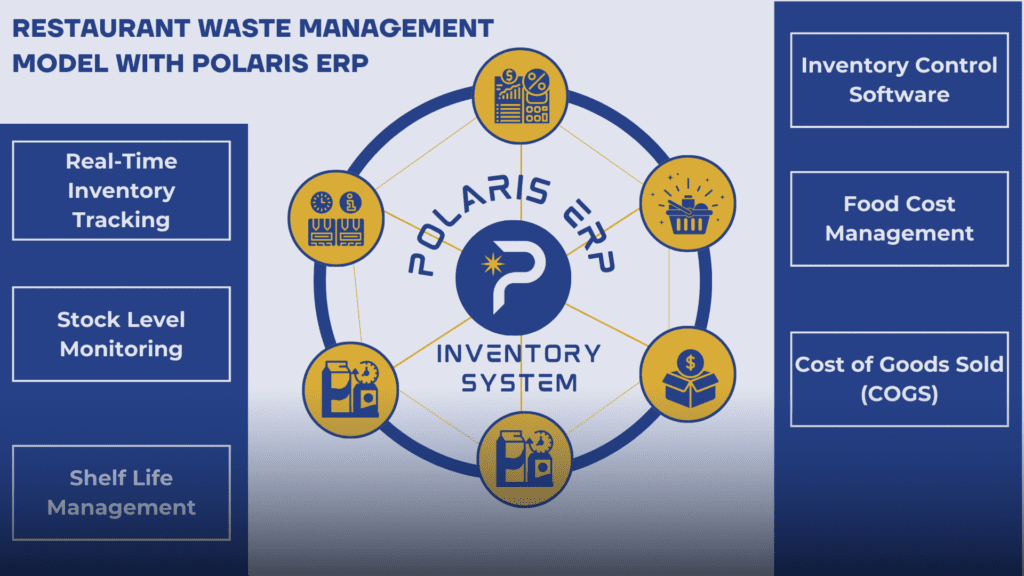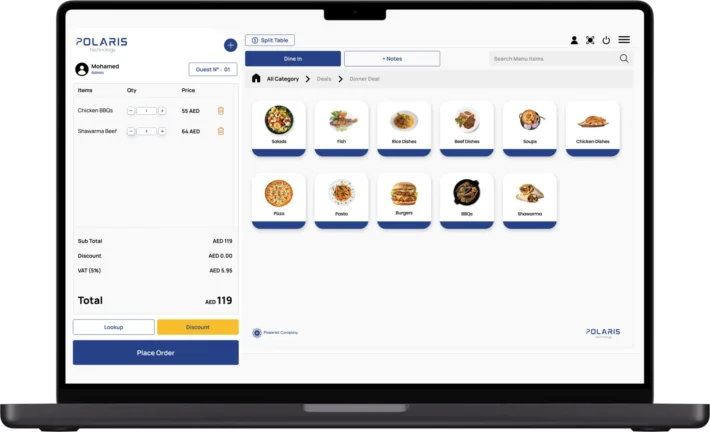ERP Inventory System: The Ultimate Solution for Restaurant Waste Management in 2024

“If food waste were a country, it would be the third-largest emitter of greenhouse gasses (GHGs) globally (8–10% of global emissions), after the US and China”.
Capgemini Research Institute, 2022
Restaurant Waste Management
According to a recent report, restaurants and food-based businesses incur losses of up to $2.6 trillion due to food waste annually. Not only is food waste costly for restaurant owners, hampering profits, but it is also impacting the environment due to its greenhouse emissions, accelerating the effects of climate change.
Waste management in restaurants is the process of handling and mitigating food waste, alongside packaging, and other byproducts, with the purpose of reducing the environmental impact. To curb food waste, experts recommend a collaborative approach involving the government setting waste reduction goals, businesses optimizing operations, and consumers making mindful food choices.
Until such an agreement is exercised and reached, the most practical solution for restaurant owners to reduce food waste in their restaurants is to employ an ERP inventory system.
What is a Restaurant ERP Inventory System
A restaurant enterprise resource planning (ERP) inventory system is a centralized platform used for monitoring, controlling and optimizing the inventory-related processes, such as procurement, stock levels, order fulfillment, and financial tracking.
The ERP Inventory System integrates with other business modules, such as point of sales (POS), supplier management, or financial accounting, to offer a comprehensive approach to resource planning and facilitate efficient decision-making across the organization.
How Can an ERP Inventory System Help to Reduce Your Restaurant’s Waste
Inventory Control Software
In the restaurant industry, it’s vital to consistently manage the availability of items and ingredients used in menu recipes. Utilizing inventory control software becomes essential for keeping a close eye on stock levels, tracking products in real-time throughout the supply chain, and efficiently handling tasks like purchasing, shipping, receiving, warehousing, and returns. This acts as a food waste management software, informing about the condition of all items, in order to avoid spoilage and waste.
An important benefit of inventory control software is the automation of processes, which reduces human errors, allowing for real-time data analytics that enables more informed decision making for managers and owners. Furthermore, the integration of inventory control software contributes to reducing restaurant waste by optimizing inventory management and minimizing unnecessary losses.
Food Cost Management
Efficient restaurant waste management is crucial for restaurant food cost management, encompassing expenses like goods purchased, warehouse costs, and the quantity and cost of each item and ingredient used in various recipes and kitchen operations. Excessive waste poses a significant challenge to food cost management, leading to increased expenses and reduced profitability.
An ERP inventory system proves instrumental in tackling this challenge by organizing restaurant kitchens and inventories, offering accurate information on goods through systematic categorization. From perishable items to frequently used products, the system provides insights into product expiration dates, follows the first in, first out (FIFO) principle, identifies items requiring replenishment, and highlights goods that entered with higher-than-usual prices. This comprehensive insight allows proactive measures, aiding in efficient waste reduction strategies and contributing to overall restaurant efficiency.
Cost of Goods Sold
In addition to the essential role in pricing, menu optimization, and cost control, tracking and managing the Cost of Goods Sold (COGS) plays a crucial part in waste management for restaurant owners. COGS, representing the cost incurred in selling specific menu items, covers raw materials, ingredients, and other production-related expenses.
The formula for COGS is:
COGS = Beginning Inventory + Purchases − Ending Inventory
By efficiently managing COGS through tools like an ERP inventory system or waste management ERP, restaurant owners gain insights into inventory levels, product usage, and trends. This, in turn, empowers them to minimize waste, reduce excess inventory, and adopt strategies for sustainable operations, further aligning financial success with waste reduction initiatives.
Real-Time Inventory Tracking
ERP inventory systems provide real-time inventory tracking of available products and ingredients, or other goods in the inventory, like uniforms, or kitchen utensils for instance. This feature encompasses a complex network of downstream and upstream suppliers, interconnected in an unified system that identifies where each individual product sits across their entire life cycle.
The real-time inventory tracking feature empowers restaurant owners to proactively manage their inventory, identifying products that need prompt utilization to prevent wastage. It also allows owners to monitor stock levels closely, prompting timely replenishment to avoid depletion. This seamless integration between inventory visibility and waste reduction aligns with sustainable practices, ensuring optimal resource utilization and minimizing unnecessary waste in restaurant operations.
Stock Level Monitoring

Stock level monitoring in ERP inventory management involves the continuous observation and assessment of the quantity of products, ingredients, and other items held in stock. The primary purpose of this monitoring is to proactively manage inventory levels to reduce waste. By keeping a close eye on stock levels, businesses can achieve the following objectives related to waste reduction: preventing overstocking, minimizing out-of-stock situations, aligning stock levels with actual demand, identifying slow-moving items or implementing FIFO method.
Shelf Life Management
Shelf Life Management in an ERP inventory system empowers restaurants to effectively manage the freshness and usability of products, promoting a proactive approach to waste reduction. It ensures that products are utilized efficiently, contributing to both operational efficiency and sustainability in the food service industry.
Shelf life management includes automated alerts, informing when products approach their expiration date. This real-time visibility empowers owners to strategically incorporate these items into various dishes promptly, minimizing the risk of spoilage and optimizing inventory utilization.
Complex Restaurant Inventory Management
For restaurant chains, establishments with multiple brands, or those operating across various branches, inventory management becomes exceptionally intricate, necessitating the adoption of an ERP inventory system. In such scenarios, a variety of factors comes into play, as outlined below.
Supplier Relationship Management (SRM)
Cultivating strong bonds with suppliers is foundational for a reliable and sustainable supply chain, crucial for both inventory management and waste reduction. SRM involves negotiating contracts, ensuring timely deliveries, and maintaining optimal stock levels. By fostering transparent and accountable relationships, SRM minimizes disruptions, enhances inventory control, and contributes to reducing waste through efficient supply chain practices.
Multi-Location Inventory Management
For restaurant chains and franchises, consistent inventory control across multiple locations is essential for waste reduction. Multi-location inventory management focuses on creating a centralized system that synchronizes stock levels, streamlines procurement, and facilitates seamless communication between outlets. This approach ensures uniformity, reduces excess stock, and enhances waste management practices across diverse locations.
Procurement Automation
Automating procurement processes is not just about efficiency; it’s a strategic move towards minimizing restaurant waste. Automation streamlines order generation, approvals, and supplier communications, reducing human errors and expediting the procurement cycle. By incorporating technology into procurement workflows, restaurant owners can enhance accuracy, optimize costs, and contribute to waste reduction through more controlled inventory management.
Minimizing food waste in restaurant businesses remains a significant journey. While the ultimate goal is aligning legislation with proactive restaurant involvement and consumer responsibility, the adoption of an ERP restaurant management solution, equipped with inventory and food waste and cost management system is the best solution. This not only helps in reducing food waste but also curbs costs arising from spoilage, ultimately enhancing restaurants’ profitability.




[…] widespread challenge in the F&B world: minimizing waste and optimizing production expenses. Its inventory management function guides restaurateurs in efficient stock management, preventing overstocking and minimizing […]